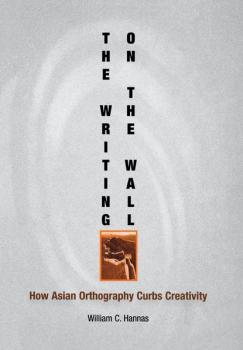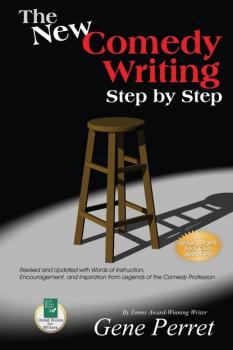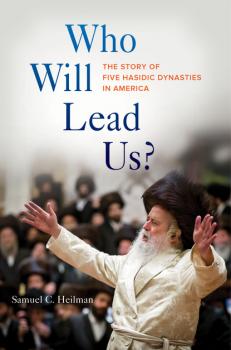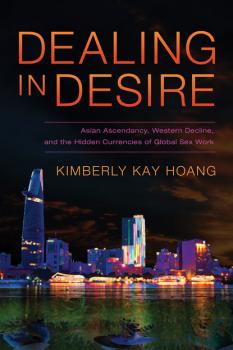ТОП просматриваемых книг сайта:
Культурология
Различные книги в жанре Культурология, доступные для чтения и скачиванияАннотация
Students in Japan, China, and Korea are among the world's top performers on standardized math and science tests. The nations of East Asia are also leading manufacturers of consumer goods that incorporate scientific breakthroughs in telecommunications, optics, and transportation. Yet there is a startling phenomenon known throughout Asia as the «creativity problem.» While East Asians are able to use science, they have not demonstrated the ability to invent radically new systems and paradigms that lead to new technologies. In fact, the legal and illegal transfer of technology from the West to the East is one of the most contentious international business issues. Yet Asians who study and work in the West and depend upon Western languages for their research are among the most creative and talented scientists, no less so than their Western counterparts. William C. Hannas contends that this paradox emerges from the nature of East Asian writing systems, which are character-based rather than alphabetic. Character-based orthographies, according to the author, lack the abstract features of alphabetic writing that model the thought processes necessary for scientific creativity. When first learning to read, children who are immersed in a character-based culture are at a huge disadvantage because such writing systems do not cultivate the ability for abstract thought. Despite the overwhelming body of evidence that points to the cognitive side-effects, the cultural importance of character-based writing makes the adoption of an alphabet unlikely in the near future.
Информация о книге
Автор произведения William C. Hannas
Жанр Культурология
Серия Encounters with Asia
Аннотация
In this book you'll find everything you always wanted to know about the real, honest-to-not-so-goodness, day-to-day inner workings of Hollywood. Not the glamorous Oscar-winning-Spielberg-red-carpet Hollywood, but the real-life daily grind of working Hollywood. For the very first time, a Hollywood film agent has opened up her phone sheet and crackberry to show us how agents, writers, and directors function in a world of producers, development executives, and studio executives. This isn't another book dishing the dirt about the rich and famous; it's a fresh, tell-all translation from Hollywood-speak to plain English, a peek behind the wizard's curtain into a culture that's rarely captured without cliche and hyperbole. You'll learn how to get an agent, how to keep one, what they do, and what they don't do. You'll learn how agents navigate through the murky, film-world politics and even why agents are such infamous liars.
Аннотация
Three-time Emmy Award-winner Gene Perret's «„Comedy Writing Step by Step“» has been the manual for humor writers for 25 years. In this new book, his first update, Perret offers readers a treasure trove of guidelines and suggestions covering a broad range of comedy writing situations, along with many all-important insights into the selling of one's work. Perret covers all aspects of comedy writing in his uniquely knowledgeable and anecdotal fashion.
Аннотация
With over 630 striking color photos and illustrations, this Chinese art guide focuses on the rich tapestry of symbolism which makes up the basis of traditional Chinese art. Chinese Art: A Guide to Motifs and Visual Imagery includes detailed commentary and historical background information for the images that continuously reappear in the arts of China, including specific plants and animals, religious beings, mortals and inanimate objects. The book thoroughly illuminates the origins, common usages and diverse applications of popular Chinese symbols in a tone that is both engaging and authoritative. Chinese Art: A Guide to Motifs and Visual Imagery is an essential reference for collectors, museum-goers, guides, students and anyone else with a serious interest in the culture and history of China.
Аннотация
Genocide involves significant death and trauma. Yet the enormous scope of genocide comes into view when one looks at the factors that lead to mass killing, the struggle for survival during genocide, and the ways survivors reconstruct their lives after the violence ends. Over a one hundred day period in 1994, the country of Rwanda saw the genocidal slaughter of at least 800,000 Tutsi at the hands of members of the Hutu majority government. This book is a powerful oral history of the tragedy and its aftermath from the perspective of its survivors.<BR /><BR /> Based on in-depth interviews conducted over the course of fifteen years, the authors take a holistic approach by tracing how victims experienced the horrific events, as well as how they have coped with the aftermath as they struggled to resume their lives. The Rwanda genocide deserves study and documentation not only because of the failure of the Western world to intervene, but also because it raises profound questions about the ways survivors create a new life out of the ashes of all that was destroyed. How do they deal with the all-encompassing traumas of genocide? Is forgiveness possible? And what does the process of rebuilding teach us about genocide, trauma, and human life?
Аннотация
Hasidism, a movement many believed had passed its golden age, has had an extraordinary revival since it was nearly decimated in the Holocaust and repressed in the Soviet Union. Hasidic communities, now settled primarily in North America and Israel, have reversed the losses they suffered and are growing exponentially. With powerful attachments to the past, mysticism, community, tradition, and charismatic leadership, Hasidism seems the opposite of contemporary Western culture, yet it has thrived in the democratic countries and culture of the West. How? <I>Who Will Lead Us?</I> finds the answers to this question in the fascinating story of five contemporary Hasidic dynasties and their handling of the delicate issue of leadership and succession.<BR />  <BR /> Revolving around the central figure of the rebbe, the book explores two dynasties with too few successors, two with too many successors, and one that believes their last rebbe continues to lead them even after his death. Samuel C. Heilman, recognized as a foremost expert on modern Jewish Orthodoxy, here provides outsiders with the essential guide to continuity in the Hasidic world.
Аннотация
First published in 1986, Lila Abu-Lughod’s <I>Veiled Sentiments</I> has become a classic ethnography in the field of anthropology. During the late 1970s and early 1980s, Abu-Lughod lived with a community of Bedouins in the Western Desert of Egypt for nearly two years, studying gender relations, morality, and the oral lyric poetry through which women and young men express personal feelings. The poems are haunting, the evocation of emotional life vivid. But Abu-Lughod’s analysis also reveals how deeply implicated poetry and sentiment are in the play of power and the maintenance of social hierarchy. What begins as a puzzle about a single poetic genre becomes a reflection on the politics of sentiment and the complexity of culture.<BR />  <BR /> This thirtieth anniversary edition includes a new afterword that reflects on developments both in anthropology and in the lives of this community of Awlad 'Ali Bedouins, who find themselves increasingly enmeshed in national political and social formations. The afterword ends with a personal meditation on the meaning—for all involved—of the radical experience of anthropological fieldwork and the responsibilities it entails for ethnographers.
They Leave Their Kidneys in the Fields - Sarah Bronwen Horton
California Series in Public AnthropologyАннотация
They Leave Their Kidneys in the Fields takes the reader on an ethnographic tour of the melon and corn harvesting fields of California’s Central Valley to understand why farmworkers suffer heatstroke and chronic illness at rates higher than workers in any other industry. Through captivating accounts of the daily lives of a core group of farmworkers over nearly a decade, Sarah Bronwen Horton documents in startling detail how a tightly interwoven web of public policies and private interests creates exceptional and needless suffering.   
Аннотация
What can we learn about nationalism by looking at a country’s cultural institutions? How do the history and culture of particular cities help explain how museums represent diversity? <I>Artifacts and Allegiances</I> takes us around the world to tell the compelling story of how museums today are making sense of immigration and globalization. Based on firsthand conversations with museum directors, curators, and policymakers; descriptions of current and future exhibitions; and inside stories about the famous paintings and iconic objects that define collections across the globe, this work provides a close-up view of how different kinds of institutions balance nationalism and cosmopolitanism. By comparing museums in Europe, the United States, Asia, and the Middle East, Peggy Levitt offers a fresh perspective on the role of the museum in shaping citizens. Taken together, these accounts tell the fascinating story of a sea change underway in the museum world at large.
Аннотация
This captivating ethnography explores Vietnam’s sex industry as the country ascends the global and regional stage. Over the course of five years, author Kimberly Kay Hoang worked at four exclusive Saigon hostess bars catering to diverse clientele: wealthy local Vietnamese and Asian businessmen, Viet Kieus (ethnic Vietnamese living abroad), Western businessmen, and Western budget-tourists. <I>Dealing in Desire</I> takes an in-depth and often personal look at both the sex workers and their clients to show how Vietnamese high finance and benevolent giving are connected to the intimate spheres of the informal economy. For the domestic super-elite who use the levers of political power to channel foreign capital into real estate and manufacturing projects, conspicuous consumption is a means of projecting an image of Asian ascendancy to potential investors. For Viet Kieus and Westerners who bring remittances into the local economy, personal relationships with local sex workers reinforce their ideas of Asia’s rise and Western decline, while simultaneously bolstering their diminished masculinity. <I>Dealing in Desire</I> illuminates Ho Chi Minh City’s sex industry as not just a microcosm of the global economy, but a critical space where dreams and deals are traded.










